this project, which has a clear and cohesive spatial composition, emphasises immediate legibility, which facilitates the identification of its various different spaces & thus encourages their appropriation
this project, which has a clear and cohesive spatial composition, emphasises immediate legibility, which facilitates the identification of its various different spaces & thus encourages their appropriation
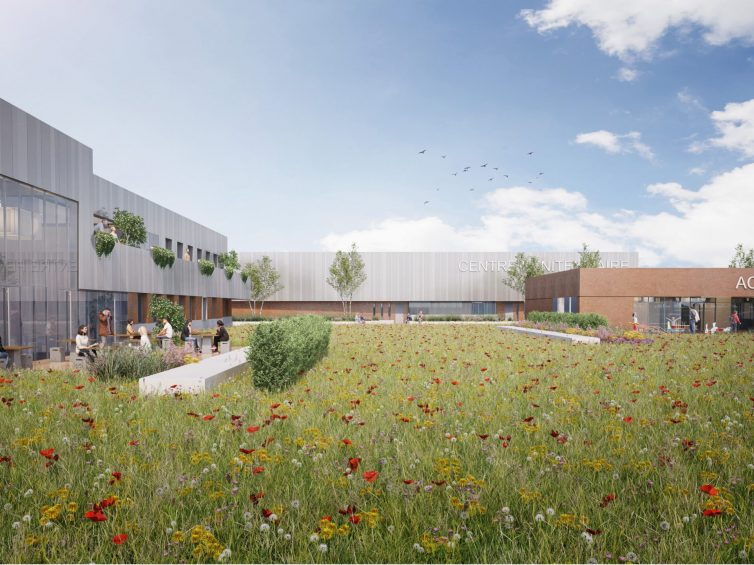
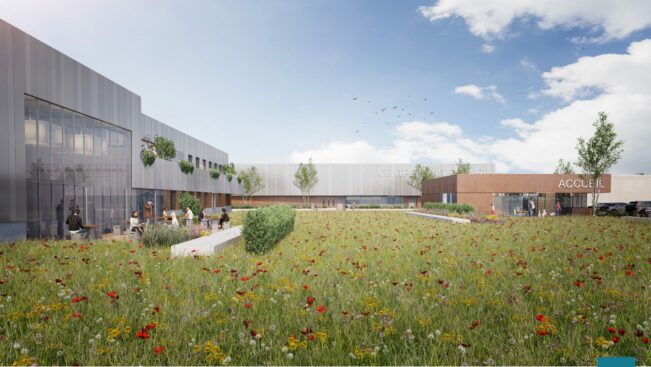
| program | competitive tender: construction of a penitentiary centre whose original architectural design favours integration into the surrounding environment |
| client | APIJ (Agence Publique pour l'Immobilier de la Justice) |
| address | 10000 Troyes-Lavau • France |
| building type | protect |
| status | completed |
| expertises | architecture |
| offices | paris |
| size | 31.000 m² |
| team | • design architects: assar & VGA • general contractor: Franki • building services (BET TCE): Egis • HQ technical study E: Egis Concept • acoustician: Acoustb • kitchen designer: Creacept • landscape designer: Atelier Villes & Paysages • signage: Ateliers 59 |
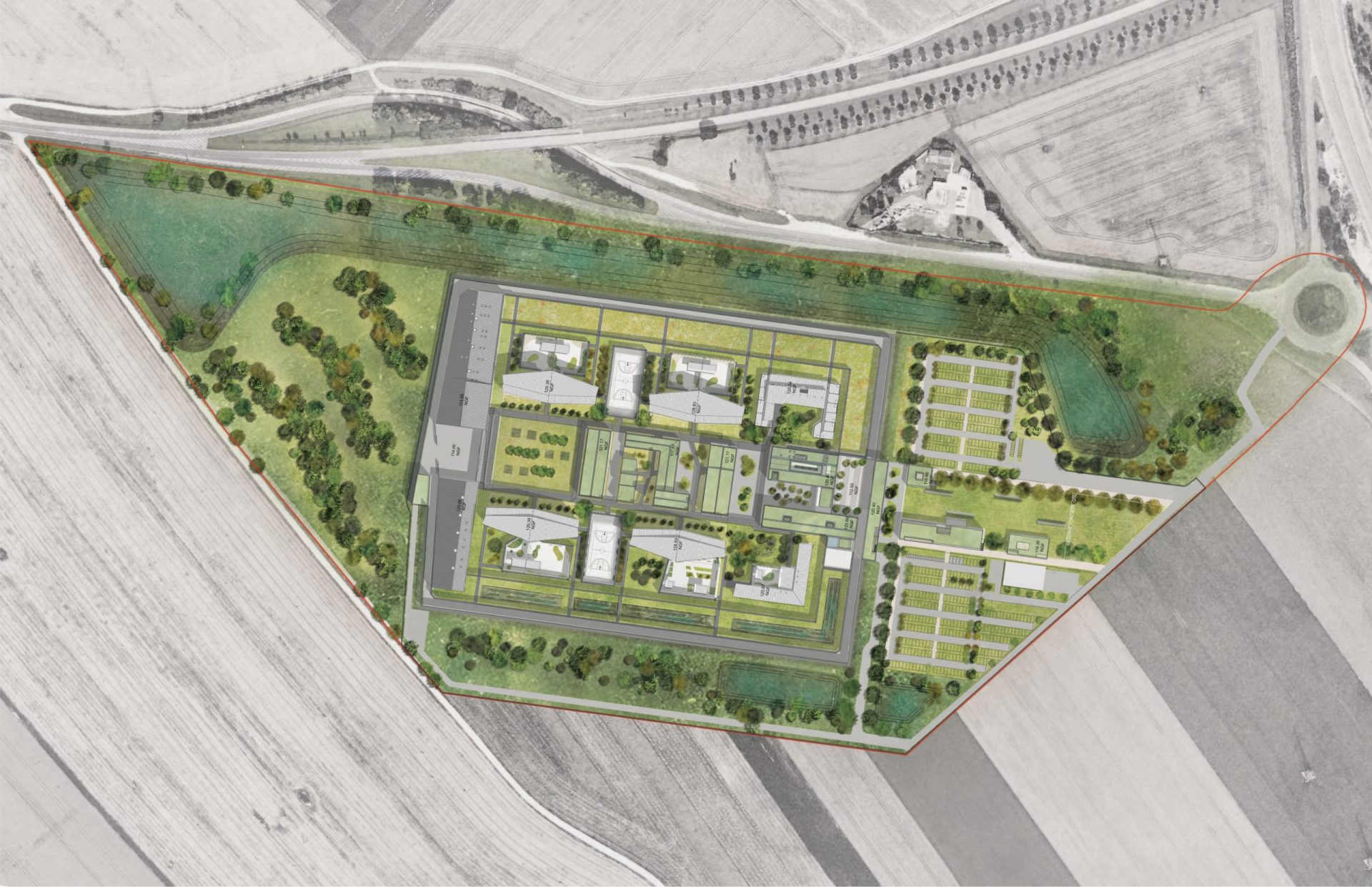
The organisation of the different entities, the volumetrics, articulations, transitions, and the materials used, all generate an architectural narrative suited to the living conditions of detention and the different profiles of the detainees. These overall choices provide a complete functionality as well as multiple qualities of use, both for the staff, and for the detainees and families.
The project, composed of multiple buildings, is conceived as a structured “campus” along a central unifying “axis”. This is presented as a succession of “intervals” within which the common buildings configure connections between the main lateral circulation routes linking the different accommodation units located either side of the axis. Each interval between the buildings highlights individual spaces, which, through their diversity, enhance and embellish the movements and routes taken during the period of detention.
The primary circulation routes form both the skeleton and arteries of the project and give access to the gymnasium, workshops, and places of worship, or entertainment, for example.
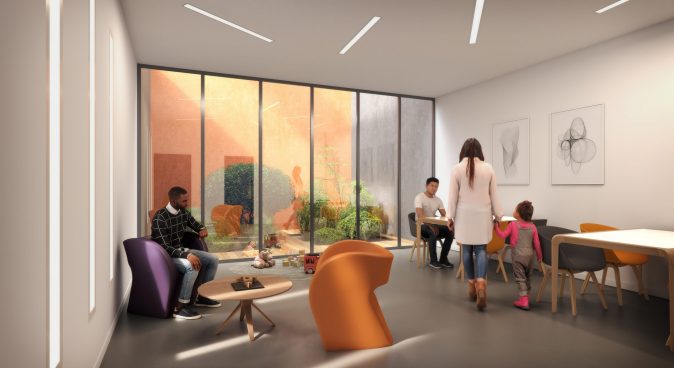
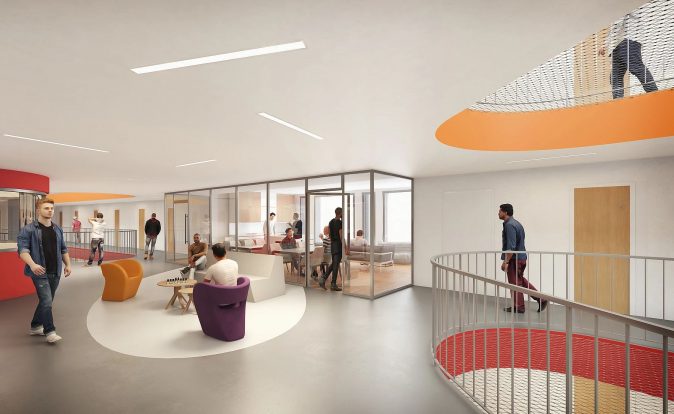
Within the different accommodation sections, whose larger dimensions stand taller than the curtain wall, each cell has the benefit of long views towards either the weathering and the curtain wall in the distance, or the central spaces that form the heart of the project. The implantation and volumetrics of the accommodation sections also enable a reduction in visibility between the cells. The accommodation buildings are conceived with the individual cell as the starting point. The cells are grouped around a nave pierced by patios whose varied contours create a space bathed in overhead natural lighting.
The design of the façades is derived from the work on the internal space of the individual cells. This is translated into a series of “folds” placed side by side, creating a rhythm and breaking up the austerity, while reinforcing the identity specific to the accommodation sections.